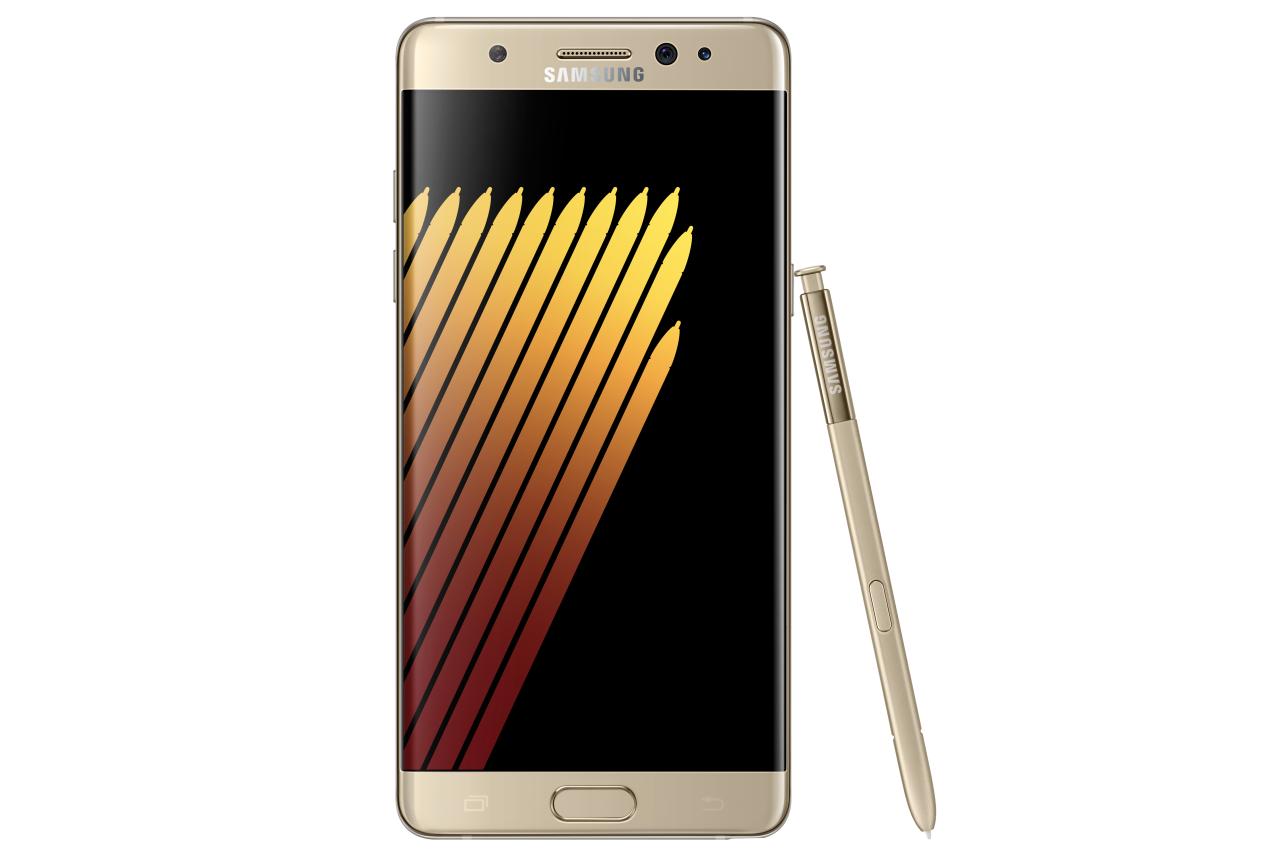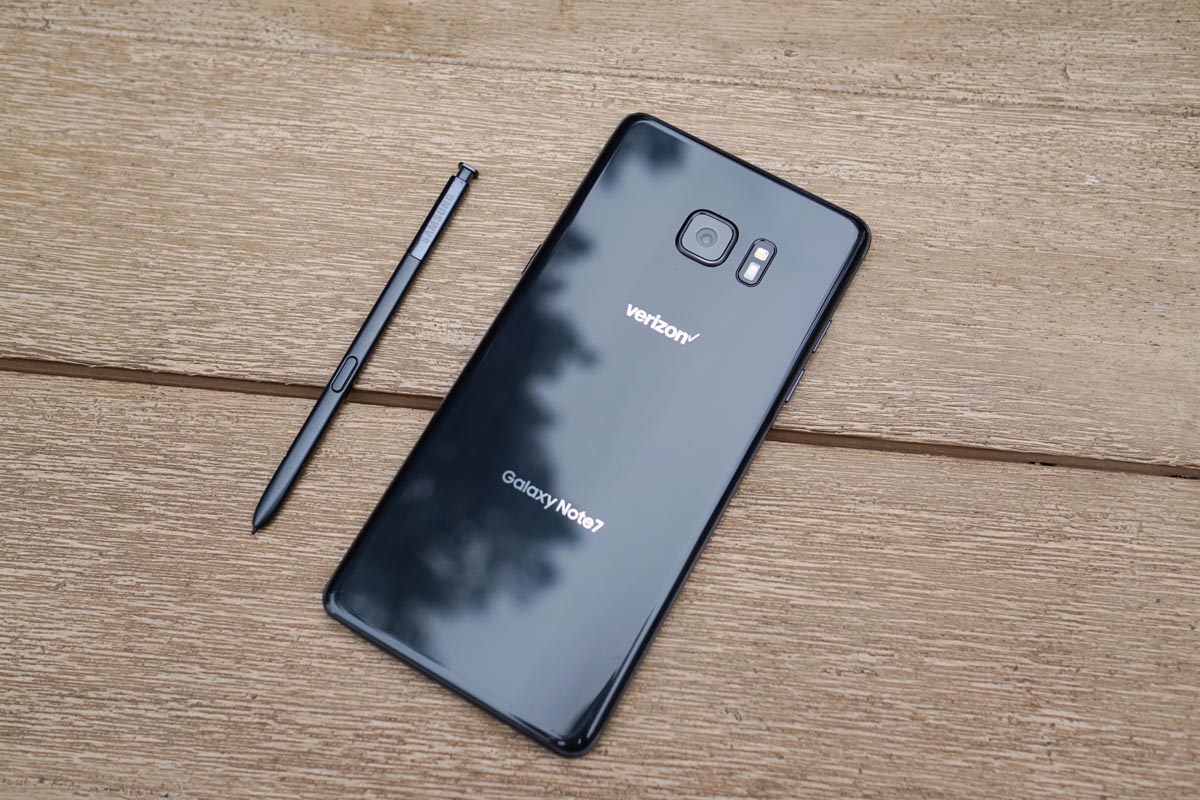Samsung Note7 stands as a landmark in the timeline of smartphone innovation, both celebrated and criticized in equal measure. Launched amid high expectations, it promised cutting-edge features and unparalleled performance, only to become infamous due to safety issues that led to a global recall. This narrative explores the rise and fall of the Note7, shedding light on its technological advancements, market reception, and the subsequent impact on Samsung’s reputation.
From its impressive hardware specifications to its innovative S Pen functionality, the Samsung Note7 captivated consumers upon release. However, the excitement quickly turned to concern as reports of battery malfunctions surfaced, prompting a major recall and altering the landscape of consumer trust in the brand. This journey through the Samsung Note7 chronicles not just a product, but an era defined by rapid technological advancements and the lessons learned in safety and reliability.
History of the Samsung Note7
The Samsung Note7, a premium phablet, was unveiled in 2016, marking a significant chapter in Samsung’s smartphone legacy. The device was anticipated to advance the Note series further, combining cutting-edge technology with a sleek design. However, its journey was marred by significant challenges, particularly concerning battery safety, leading to one of the most notable product recalls in tech history.
The development of the Note7 involved an extensive design and engineering process aimed at creating a device that met the high expectations of consumers. With features like a dual-edge display, enhanced S Pen functionality, and water resistance, Samsung sought to elevate user experience. However, the device quickly became infamous due to battery-related issues shortly after its release.
Timeline of Key Events
The timeline below illustrates the major milestones in the history of the Samsung Note7, highlighting its release and subsequent recall:
- August 2, 2016: Samsung officially launched the Galaxy Note7 at an event in New York City, showcasing its innovative features and design.
- August 19, 2016: The device became available for pre-order in several markets, generating excitement and positive initial reviews.
- September 2, 2016: Reports of battery fires and malfunctions began to surface, prompting Samsung to investigate the issue.
- September 15, 2016: Samsung announced a global recall of the Note7, advising users to stop using the device immediately.
- October 13, 2016: After implementing replacement units, reports of new incidents emerged, leading to a second recall.
- October 11, 2016: Samsung officially discontinued the Galaxy Note7, marking the end of its production.
Development Process and Design Features
The Samsung Note7 was developed with the intention of integrating advanced technology with user-friendly design. The device incorporated several key features that defined its high-end status in the smartphone market.
The design featured a 5.7-inch Quad HD Super AMOLED display, a seamless glass and metal body, and an enhanced S Pen with improved pressure sensitivity. The Note7 was also IP68 rated for water and dust resistance, making it more durable for everyday use. Samsung aimed to provide users with an elegant yet functional device, fostering creativity and productivity.
Market Reception and Initial Reviews
Upon its release, the Samsung Note7 received favorable reviews from critics and consumers alike, which lauded its design, display quality, and performance capabilities. Tech reviewers highlighted its vibrant screen, robust camera performance, and the versatility of the S Pen as standout features.
However, the excitement surrounding its release was quickly overshadowed by safety concerns. Initial reports of battery incidents prompted journalists to question the reliability of the device. Despite this, many early adopters spoke highly of the Note7’s capabilities before the recall, demonstrating a mixed reception that shifted dramatically as safety issues became more prominent.
“The Galaxy Note7 was a remarkable device, but its legacy became defined by the significant challenges it faced shortly after launch.”
Technical Specifications and Features: Samsung Note7

The Samsung Note7, launched in 2016, was a flagship device that embodied cutting-edge technology and innovation in the smartphone industry. With its powerful hardware and unique features, it catered to both productivity and entertainment needs, making it a popular choice among users.
The hardware specifications of the Samsung Note7 were impressive, featuring a robust combination of processor, RAM, and storage options designed to deliver top-tier performance. The device was equipped with a Qualcomm Snapdragon 820 processor, which ensured smooth multitasking and efficient performance. Additionally, it came with 4GB of RAM, which provided ample memory for running applications without lag. Users had the choice of either 64GB or 128GB of internal storage, which could be expanded via a microSD card up to 256GB, accommodating a multitude of applications, photos, and videos.
Unique Features of the Samsung Note7
The Samsung Note7 stood out for its unique features that enhanced user experience and functionality. One of its most notable features was the S Pen, which offered precision and versatility for note-taking, drawing, and navigation. The S Pen was also water-resistant, making it a practical tool for everyday use. Additionally, the device featured an impressive 5.7-inch Quad HD Super AMOLED display, renowned for its vibrant colors and deep contrasts, providing an immersive viewing experience for videos and games.
To provide a clearer comparison of the Samsung Note7 with its predecessors and successors, the following table summarizes the key specifications and features, highlighting the improvements made over time:
| Model | Processor | RAM | Storage Options | Display | S Pen Features |
|---|---|---|---|---|---|
| Galaxy Note5 | Exynos 7420 | 4GB | 32GB / 64GB | 5.7″ QHD Super AMOLED | Standard S Pen |
| Galaxy Note7 | Qualcomm Snapdragon 820 | 4GB | 64GB / 128GB (expandable) | 5.7″ QHD Super AMOLED | Water-resistant S Pen with Air Command |
| Galaxy Note8 | Qualcomm Snapdragon 835 | 6GB | 64GB / 128GB / 256GB (expandable) | 6.3″ QHD+ Super AMOLED | Improved S Pen with more features |
The comparison illustrates how the Samsung Note7 not only maintained the strong foundation set by its predecessors but also introduced enhancements that paved the way for future models. The integration of the Qualcomm Snapdragon 820 processor and the introduction of the water-resistant S Pen were significant advancements that showcased Samsung’s commitment to innovation in the smartphone market.
Safety Concerns and Recall Process

The Samsung Galaxy Note7, once hailed for its cutting-edge features and sleek design, quickly became infamous due to serious safety concerns that led to a global recall. The incidents surrounding the Note7’s battery issues highlighted the critical importance of device safety in the smartphone industry. This section delves into the events that led to the recall, the safety measures implemented by Samsung afterward, and the lasting impact on the brand’s reputation.
Incidents Leading to Recall, Samsung note7
In late 2016, reports began surfacing of Samsung Note7 devices catching fire or exploding while charging. The initial incident involved a replacement battery that was supposed to resolve earlier issues but instead exacerbated them. By September 2016, Samsung announced a recall of approximately 2.5 million devices, urging customers to stop using the phones. The severity of the situation escalated when reports continued to emerge even after the recall, prompting Samsung to issue a complete halt on production and sales of the Note7. Ultimately, the global recall affected the company’s financial outlook, with estimated losses exceeding $5 billion.
Post-recall Safety Measures
In response to the catastrophic battery failures, Samsung took decisive actions to restore consumer confidence and enhance product safety. The company implemented a rigorous multi-step battery safety check process known as the “8-Point Battery Safety Check.” This comprehensive evaluation included:
- Assessment of battery cell design.
- Testing of the battery’s durability and lifespan.
- Verification of charging and discharging safety.
- Evaluation of battery components and materials.
- Thermal testing to assess heat levels.
- Examination for potential manufacturing defects.
- Conducting extensive field tests.
- Implementation of strict quality control measures throughout the manufacturing process.
These measures demonstrated Samsung’s commitment to safety and have since become a benchmark in the industry for battery testing protocols.
Impact on Brand Reputation and Future Launches
The Note7 recall had profound implications for Samsung’s brand reputation. Initially, it sparked widespread media coverage and public scrutiny, leading to a decline in consumer trust. In the short term, Samsung faced significant financial repercussions alongside negative sentiment that affected its stock prices. However, the company endeavored to recover by transparently communicating the safety measures taken and focusing on product innovation.
As a result, subsequent smartphone launches, including the Galaxy S8 and Note8, incorporated advanced safety features, including improved battery technology and design. Samsung’s resilience in bouncing back from the Note7 crisis serves as a critical case study in crisis management within the tech industry, highlighting how robust safety protocols and transparent communication can help restore brand reputation after significant setbacks.
Consumer Impact and Market Effects

The Samsung Note7 crisis had a profound effect on both consumers and the market. For many users, the experience was not just about a defective device; it involved safety concerns, financial implications, and trust issues with the brand. The repercussions of the Note7’s failure extended far beyond individual experiences, influencing the company’s financial health and the competitive landscape of the smartphone industry.
Consumer Testimonials
Many consumers shared their unsettling experiences regarding the Samsung Note7, which included not only inconvenience but also safety hazards. Some users reported their devices exploding or catching fire, leading to potential physical harm.
“I was terrified when my Note7 started to emit smoke while I was charging it overnight. I had to evacuate my home!” – Jane D., Note7 user.
“I loved the features of the Note7, but the fear that it could explode made me return it immediately. I couldn’t risk my safety.” – Mark T., Note7 user.
These testimonials highlight the emotional and safety-related impact on consumers, which significantly affected their perception of the brand.
Financial Implications for Samsung
The Note7 recall had staggering financial implications for Samsung. The company is estimated to have incurred an approximate loss of $5 billion due to the production halt, refunds, and marketing expenses that followed the recall. Additionally, the incident led to a sharp decline in Samsung’s stock prices.
In the wake of the crisis, Samsung’s shares fell more than 8% in a short span, wiping billions off its market value. This decline not only impacted investor confidence but also altered the financial trajectory of the company for several quarters. Despite the eventual recovery, the Note7 incident left a lasting mark on the company’s financial health.
Competitors Capitalizing on Samsung’s Crisis
The problems faced by Samsung during the Note7 recall presented an opportunity for competitors to strengthen their market positions. Companies like Apple, Google, and even OnePlus leveraged the situation to attract disillusioned Samsung customers.
For instance, Apple launched aggressive marketing campaigns emphasizing the safety and reliability of their iPhones, directly addressing the concerns raised by the Note7 crisis. Google took advantage of the situation by promoting the Pixel as a secure alternative, highlighting its features and software updates.
“Samsung’s crisis became a golden opportunity for us to showcase the strengths of our devices,” noted a spokesperson from a competing smartphone manufacturer.
These strategic movements not only helped competitors gain market share but also shifted consumer focus away from Samsung, demonstrating how quickly market dynamics can change in response to a brand’s misfortune. The Note7 incident serves as a case study in both consumer safety and corporate resilience in the face of significant challenges.
Questions and Answers
What were the key features of the Samsung Note7?
The Samsung Note7 featured a 5.7-inch Quad HD display, an S Pen with enhanced functionality, iris scanning technology, and a powerful processor, making it a standout device in its time.
Why was the Samsung Note7 recalled?
The Samsung Note7 was recalled due to battery defects that caused some devices to overheat and even catch fire, leading to significant safety concerns.
What impact did the Note7 recall have on Samsung’s reputation?
The recall significantly affected Samsung’s brand reputation, leading to a decrease in consumer trust and prompting the company to implement stricter safety measures for future products.
How did competitors respond to the Note7 crisis?
Competitors capitalized on the Note7 crisis by promoting their devices as safer alternatives, with marketing campaigns aimed at capturing the attention of disgruntled Samsung customers.
What safety measures did Samsung implement post-recall?
Post-recall, Samsung established a comprehensive battery safety program, including rigorous testing and quality assurance processes, to restore consumer confidence in its products.
The Samsung Galaxy 10 Lite is a remarkable addition to the Galaxy series, offering a balance of performance and affordability. With its sleek design and impressive camera capabilities, it caters to users seeking quality without breaking the bank. This model stands out in the crowded marketplace, making it a top choice for budget-conscious consumers.
For those looking for a classic, the Samsung Galaxy S 4 remains a notable option. Its innovative features at the time of release set new standards in smartphone technology. While newer models have emerged, the S 4’s solid performance and user-friendly interface still attract a loyal following, proving that sometimes, older is gold.
